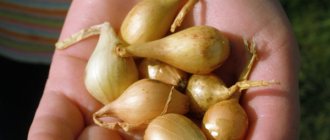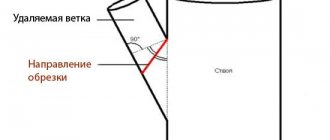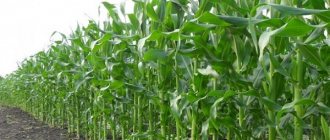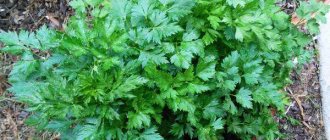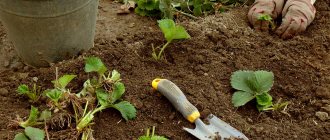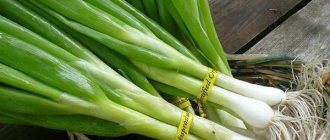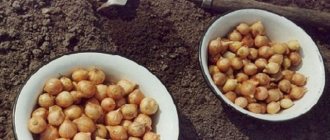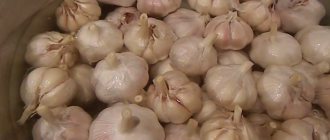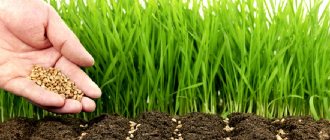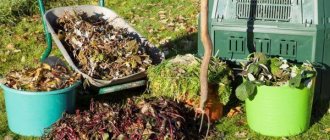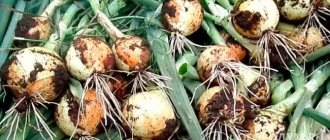Features of planting onion sets before winter
The harvest time for bulbs varies from the beginning of the third decade of June to mid-July . It all depends on the variety: onions can be early-ripening, mid-ripening and late-ripening.
The correctly selected variety of seedlings also affects the yield. From 1 m² of land, up to 5-8 kg of turnips are collected. The yield depends on the soil type, region and overall care.
Benefits of autumn planting onions:
- there is no need to store seed material;
- the cost of sowing is less than in the spring;
- after harvesting, it is possible to sow another crop;
- in the spring, time is freed up for other garden work;
- It is possible to plant unsprouted bulbs in the spring.
Winter onion varieties
Not the entire varietal list is suitable for planting before winter. For planting, the most frost-resistant varieties are selected, capable of withstanding a cold winter without consequences, and with the onset of warming, quickly growing leaves.
The list of frost-resistant varieties includes:
- Stuttgarter Riesen;
- Ruby;
- Arzamas;
- Buran;
- Bessonovsky;
- Lugansk;
- Strigunovsky;
- Chalcedony;
- Danilovsky;
- Siberian.
Important! Winter onion varieties used for planting in northern regions cannot be planted in the south. And varieties cultivated in the south are not planted where there are severe winters.
Before winter, it is allowed to use different types of material for planting. Planting turnip sets before winter is cultivated. Nigella is also sown in autumn. It can be sown later than sowing, at the end of November, in an already frozen layer of soil. For ease of sowing, under such conditions, seed furrows must be made in advance.
Varieties and hybrids of winter onion sets
Onion varieties and hybrids are suitable for winter planting:
- early ripening - Bogatyrskaya sila, Bessonovsky, Myachkovsky 300, Odinovets, Siberian annual, Spanish medallion F1, Skorospelka, Stuttgarter Risen;
- mid-season - Danilovsky 301, Carmen MS, Krepysh, Chalzendon, Ecstasy, Tamara F1;
- late ripening - Comet, Lugansky, Rubin (red), Sturon.
Further care of the garden bed
For the winter, the bed with onions can be covered with spruce branches
After sowing, the onions need to be monitored. It should not produce roots, much less shoots. In this case, there will be no harvest at all. However, his condition should also not remain unchanged - this would mean that he was frozen. And the onions should “freeze” until spring. To do this, it only sprouts the root germ, and the bulb itself opens a little and hardens.
For the Moscow region there are no special obstacles when planting winter onions. The process is generally similar to that which takes place in Ukraine and in warm climates. Problems can begin when the winter is especially cold and the temperature drops below 15 degrees. In this case, we can only hope for a thick layer of snow, which will additionally protect the onions from freezing.
By the way, for those who are planning to start selling onions, winter planting is the most profitable. This onion is valued higher because next year it will appear earlier than others and will be fresh. The price can be safely set an order of magnitude higher, and customers are guaranteed to pay attention to it. On an industrial scale, income can be impressive, but for private owners this is a good option for a source of additional income. It can be a good way to strengthen the summer harvest. In addition, such onions are perfectly stored.
When to plant onion sets before winter
In different regions, sowing dates vary due to climatic conditions . The main criterion for starting to plant onions is a stable air temperature of +4...+6°C.
Important! The planting period for seeding is calculated so that the vegetable has time to take root before frost (1.5-2 weeks), but does not have time to germinate.
When to sow onions:
- In the Moscow region, as well as throughout central Russia , seedlings are planted from October 8 to October 25. A more accurate date is determined based on the weather and the lunar calendar.
- In the Urals and Siberia, wild oat grass is planted in the ground 1-1.5 weeks earlier, from the second half of September to mid-October.
- In the Leningrad region, sowing begins in the same way as in central Russia - from the beginning to the middle of the third ten days of October. If you take onion varieties zoned for the Leningrad region, the planting dates are in September.
According to the lunar calendar
Favorable days for planting are also determined according to the lunar calendar . Every year they are different. Pay attention to the phases: planting winter onions is scheduled for the waning moon. Seeds are not planted during the new or full moon. The zodiac signs responsible for successful planting of winter onions are Virgo, Libra and Scorpio.
At what depth to plant onion sets?
After the bulbs have been laid out, the furrows are covered on top with fertile soil or compost to the level of the edge of the furrows; there should be 3-4 cm of soil above the bulbs. Planting too shallow leads to the bulb freezing in winter; planting too deep may prevent the delicate feather from breaking through the thickness of the earth. The bulb may dry out or become wet in the spring.
It is not advisable to mulch the bed right away; this is done after persistent cold weather. Mown grass, fallen leaves, dry sawdust, carrot tops, and marigold stems are used as mulch. Marigolds, among other things, repel many pests. In the spring, be sure to remove the mulch from the garden bed so that the earth warms up faster.
It is not advisable to mulch the beds with peat, especially in a thick layer. Peat is moisture-absorbing, and in the spring it lies frozen for a long time. But a delicate onion feather cannot penetrate the thickness of the ice. Finally, peat greatly acidifies the soil, and onions react very strongly to this.
A good option is to sow winter seed and carrots in the same bed. In the fall, onions are sown first, leaving one furrow for carrots, which are sown later on the frozen ground. The advantage is that they will protect each other from pests. The sets are planted together not only with carrots, but also in a bed with strawberries to save space. At the same time, it will protect strawberries from fungal diseases and pests.
Preparing the soil for autumn planting
The soil for planting seedlings is prepared immediately after harvesting in the selected bed.
Remove plant debris and root remains. They do a deep dig on the bayonet of a shovel. Lightly incorporate humus into the soil at the rate of 5 kg per 1 m² and potassium-phosphorus fertilizers according to the instructions. Water the bed with a strong solution of potassium permanganate to disinfect the soil.
Planting onions according to the Lunar calendar for regions
For both all plants and onions, autumn planting days are determined for different regions depending on the lunar phases.
| Region | Days | Peculiarities |
| Southern | November - 21, 22, 29, 30. | Mulching (sawdust, leaves). |
| Moscow region | October - 25. November - 2, 3, 21, 22. | Shelter (spruce branches, agrofibre). |
| Ural | September - 27, 28; October - 6, 7. | Use frost-resistant varieties, enhanced protection (large layer of spruce branches, thick agrofibre). |
| Siberia | September - 27, 28. | Plant only the most frost-resistant varieties (Radar F1, Panther F1), strong protection (large layer of spruce branches, thick agrofibre). In very severe frosts, crop destruction may occur. |
Selection and preparation of planting material
The seedlings for winter planting are chosen small, with a caliber of 1 cm . Such wild oats do not disappear in the spring; they take root and overwinter better.
Reference. To avoid rotting of small onions, use high beds for better drainage and water flow.
The preparation of seed material begins with sorting . Select specimens of the same size, without visible damage, and remove rotten or frozen seed heads.
The bulbs are treated for disinfection in a solution of potassium permanganate (1 g per 1 liter of water) or copper sulfate (3 g per 1 liter of water). Dip into a warm solution for 25 minutes and allow to dry.
The heads are hardened before planting . First soak in warm (+45…+50°C) water for 10-12 minutes, then immediately plunge into ice water. To stimulate root growth, the heads are soaked in a solution of “Epin” or “Kornevin”.
You can resort to folk remedies for disinfection and soak the seeds in a solution of salt water (1 tablespoon per 1 liter of warm water) for 30 minutes or warm the heads at a temperature of +25...+30°C on a radiator for 24 hours.
The best varieties for planting in winter
Early and mid-season varieties of crops are suitable for the Moscow region. It is best to choose varieties:
- “Arzamas” (cold-resistant, high yield);
- “Odintsovets” (does not form shoots, grows in 100–110 days, average bulb weight is 60–90 g);
- “Voronezh 86” (ripens in 90–116 days, preserves for a long time and successfully);
- “Centurion” (early ripening variety, suitable for long-term storage, does not bolt);
- “Hercules” (early ripening, frost-resistant; does not form shoots, has good storability).
The climate and weather conditions of the Moscow region are such that almost any variety of vegetable can be planted in the region. You just need to pay attention to the fact that the diameter of each bulb selected for planting is at least 1 cm.
Important!
Gardening specialists do not recommend planting leeks for the winter, even on the best days for this. This type of crop is not suitable for winter planting, so it will not be possible to grow a rich harvest.
Planting scheme and cultivation of winter onion sets
After preparing the onion sets, they begin planting them.
The soil in the garden bed is leveled, clods are broken so that the soil remains loose and homogeneous . Onions grow in loamy soils. If the soil is alkaline, add wood ash to it at the rate of 1 tbsp. per 1 m furrow. If the soil is highly acidic, add lime or dolomite flour (200 g per m²).
When planting, crop rotation is observed and predecessors are taken into account . The most suitable crops are legumes, greens, tomatoes, potatoes, cabbage.
Based on the climate zone, weather forecast and lunar calendar, the planting day is chosen . Sowing begins 1.5-2 weeks before the expected frost.
The prepared arable land is divided into rows lengthwise or crosswise.
Advice. If the beds are located from north to south, furrows are laid along the length of the bed, if from east to west - across. The onion should be warmed by the sun from all sides.
The rows are placed at a distance of 15-20 cm from each other and made 4-5 cm deep . The sets are laid out along the rows with an interval of 6-7 cm, lightly pressing the bottom to the ground. Sprinkle the top with soil and lightly pat it down with your palms so that the bulbs are in close contact with the soil.
The bed is mulched to prevent freezing of wild oats. Spruce branches, cut dry grass, sawdust from deciduous trees or wood chips are used as mulching material. The height of the coating must be at least 10 cm. For the same purpose, you can use dense non-woven material - lutrasil or agrofibre (30 g/m²).
How to plant onions on turnips in the fall
Proper planting of winter seedlings is not only the optimal timing, but also compliance with agrotechnical subtleties. In particular, it is imperative to maintain correct crop rotation - for example, onion and garlic beds should rest for at least four years after two years of use.
It is best to plant onions after corn, tomatoes, cabbage (all types), cucumbers, peas and beans, and beets.
But precursors such as potatoes, celery and parsley, and beans can infect onion crops with nematodes. After carrots and radishes, you can plant winter onions if the predecessors were collected in the July harvest.
Preparing the bed
You need to prepare ahead of time, long before the onset of cold weather - approximately 35 days. You need to add mineral fertilizers to the soil - potassium salt (approximately 15 g) and superphosphate (up to 25 g) are required per square meter of bed.
If necessary, mineral fertilizers are replaced with ecophosphate in the same quantity. When digging the beds, humus is added, 5-6 kg per square meter. And immediately before planting the sets, wood ash is added to the soil, 10 g per meter.
Planting, planting depth
Before planting winter seedlings, the soil should be slightly compacted, after which furrows are made with a hoe or other garden tool, the depth of which should be 5 cm, and the distance between the grooves should be 15-20 cm. The distance between the seedlings in the furrow is 5 cm, it should be dry. The crops are sprinkled with soil (it should also be dry!) and lightly compacted.
The crops do not need watering; you can water the bed if, after ten days after planting, there is no rain. In other cases, nature itself will ensure that the plant has moisture.
The onset of frost is the time to mulch the beds with winter onions. Dry leaves, spruce branches, pine needles are suitable for this, light dry mulch needs to be pressed to the ground with something not very heavy - branches are best suited for this.
In a snowless, cold winter, you can save yourself by stretching a film over the mulch. If there is enough snow, a film coating will not be needed.
If you plant batun onions, the planting rules are the same as for onions, although batun is not grown for turnips, but only for green feathers. If you decide to plant shallots, then you need to cut off the neck and immerse the onion in warm (30°C) water for a day.
Features of caring for winter onion sets
In the spring, after the snow melts, the mulch is removed from the rows . Further care for sprouted onions consists of fertilizing, watering and loosening.
Feed onions once every 2-3 weeks . The first feeding is done two weeks after the greenery appears with an infusion of mullein or chicken droppings.
Important! Do not use fresh chicken droppings and manure - the plants will get burned.
After another two weeks, the onions are fed with potassium and phosphorus fertilizers : “Nitrophoska”, “Borofoska”, potassium phosphate.
Young onions are moisture-loving . Water the seedlings so that the soil is always moist. However, an excess of moisture will negatively affect the harvest - young vegetables may rot.
Once a week, the day after watering, the soil is loosened , being careful not to damage or pull out the bulbs. If necessary, thin out the onions. There should be 5-6 cm between plants. The beds are periodically weeded - weeds can clog the young shoots and roots of the onion, and it will develop poorly.
Mulch left on the garden bed will reduce the time required to care for the vegetable . The grass cover does not allow moisture to evaporate, the soil on the surface always remains loose, and weeds grow less.
Preparing bulbs for planting
Before planting, bulbs are calibrated while simultaneously rejecting specimens unsuitable for planting:
- dried out;
- with signs of illness;
- injured;
- rotten.
When calibrating, planting bulbs are divided into fractions:
| Fraction | Bulb diameter (diameter), cm | Purpose |
| Oatmeal | 1 | planted on a turnip |
| Sevok | 1-2 | on a turnip or feather |
| Samples | 2-3,5 | to get a green feather |
This is interesting! The larger the planting fraction, the faster the feather grows in the spring. In wild oat, feathers grow longer than in other factions, and the number of leaves is smaller.
Harvesting and storage features
A month before harvest, watering is stopped . The onion ripens and gains vitamins. When the onion feather has completely fallen onto the bed and the neck has become dry, it is time to harvest. This is done in dry, sunny weather. The collected heads are laid out on the garden bed and the soil is allowed to dry.
For storage, onions are stored in a dry, cool room - a basement or storage shed. The dry feathers are trimmed, the turnips are laid out in nets or baskets, braided and hung. “Grandma’s method” of storage is to hang onions in stockings.
Comfortable landing times in the Moscow region
The timing for planting onions in the fall is selected based on weather conditions.
Special literature warns that it is better not to rush into planting onions before winter. On average, a convenient time for this sowing method is 30 days before severe frosts.
The main problem that may occur at this stage: sowing too early leads to the onion seizing and sprouting . In this situation, you can’t do anything with him. The experts here do not give guarantees or exact dates; gardeners rely on their own instincts, experience, the thermometer and the weather forecast.
In the middle zone, to which the Moscow region belongs, the period of optimal onion planting falls on October 5-20 . The two-week interval is no joke. It seems quite difficult to hit the exact date that is ideal for winter sowing this year. It's all about the vagaries of the weather. Every year there are different weather conditions and different dates.
Different sources agree on one thing: the main thing is to pay close attention to the weather. The calculation is made using the following formula: for about three to four days the thermometer does not rise above +5 degrees - green light for planting.
Some literature suggests taking Pokrov as a reference point. But you understand, there were years when by mid-October there was a dense layer of snow that never went away until winter, and sometimes snow barely appeared by the New Year. Planting onions before winter in the Moscow region is carried out based on the specific weather situation.
Pros and cons of autumn planting onions (table)
| pros | Minuses |
| In the fall they sell fresh sets, there is a lot of it, the prices are low compared to spring | There are fears that the bow will go into the arrow |
| Onions do not need to be stored all winter, but oatmeal cannot be stored at all - it dries out quickly | Not all bulbs germinate in the spring; they can freeze, rot, or be damaged by mice |
| Autumn and winter moisture is retained in the soil, less frequent watering is required. | The consumption of planting material is 15–20% higher, it is necessary to plant more densely |
| Onions undergo hardening, resist diseases better, and grow large | There is no exact landing date, you need to navigate the changeable weather and rely on intuition |
| Less damaged by the onion fly: by the time it flies, the onion has already developed a strong root system, making it difficult for the larvae to reach the bottom | You will have to work with the soil in the cold, at slightly above-zero temperatures, which is not very pleasant |
| The harvest ripens 2 weeks earlier than during spring planting and is perfectly stored in winter. | |
| In the area freed up after onions, you can have time to grow some other early ripening crop or plant strawberries/strawberries |
